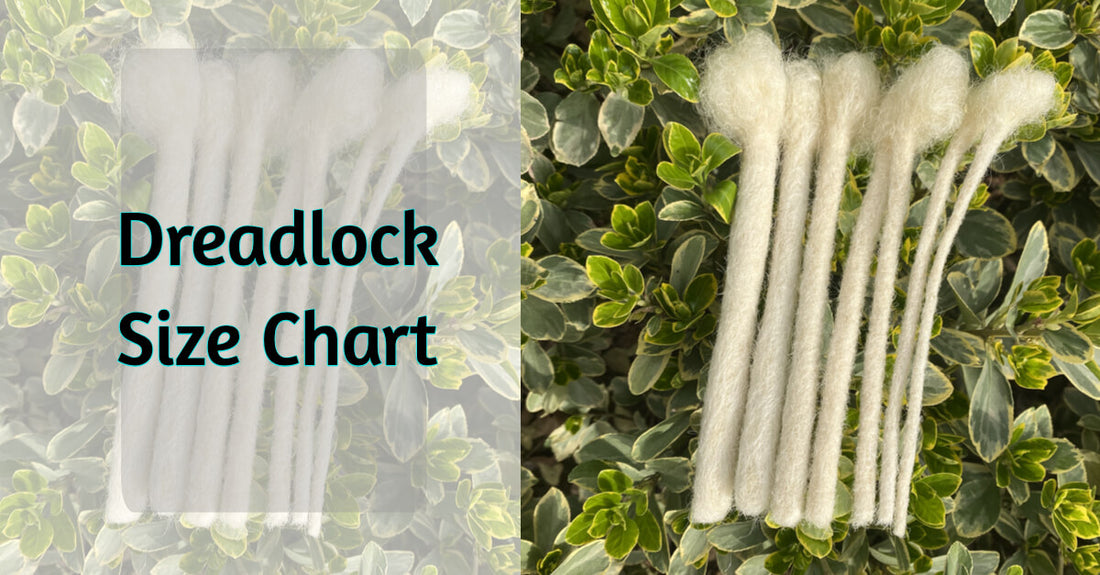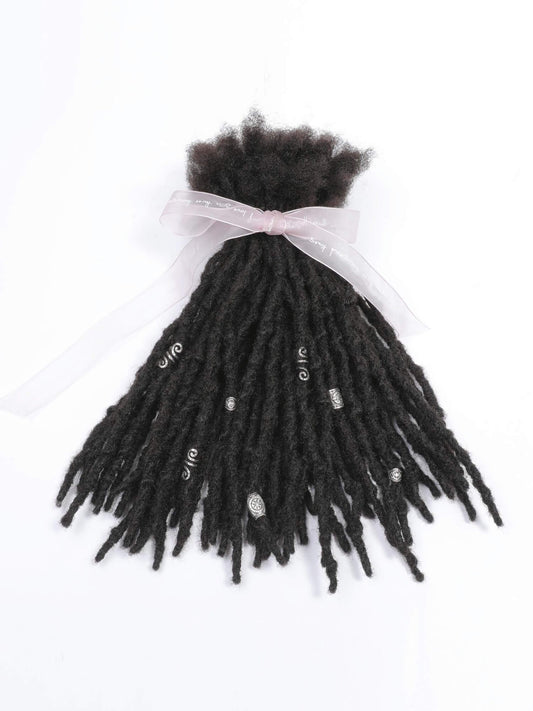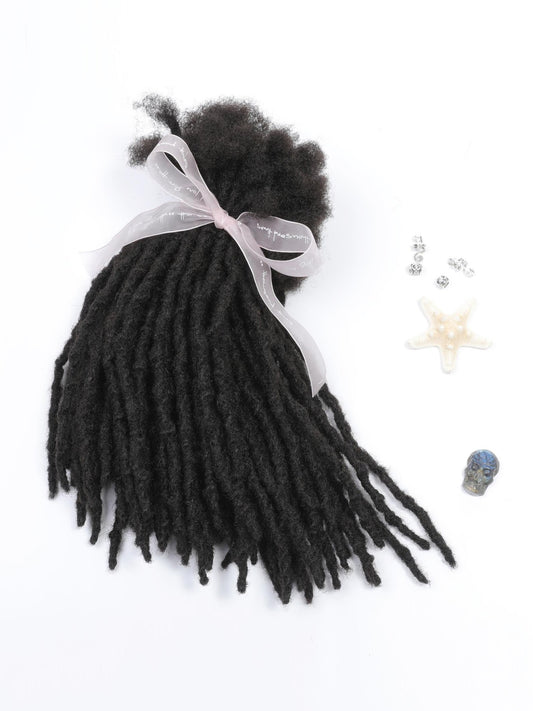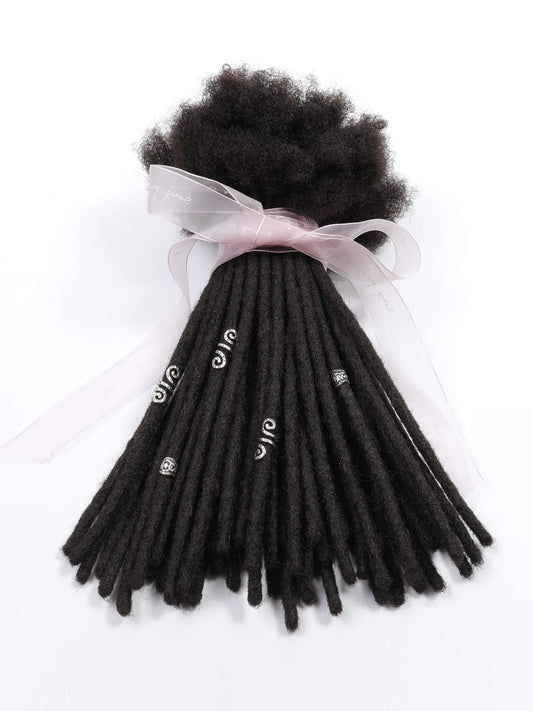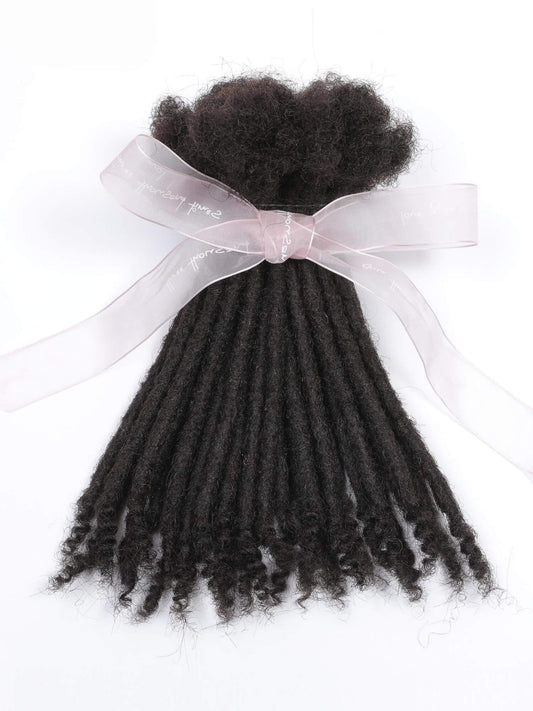Please have a review for loc size chart from our factory
Width 0.2 cm Micro
Width 0.4 cm Extra Small
Width 0.6 cm Small pencil Size
Width 0.8 cm Medium (Sharpie Size)
Width 1.0 cm Extra Medium
Width 1.2 cm Large
Width 1.5 cm Extra Large

In this article, you will find tips about how to choose the right loc size? Which is the right loc size according to your hair? Continue reading to get deep insights of the discussion.
5 Tips for Selection of Right Lot Size
Dreadlocks have different kinds depending upon several factors such as the loc size, the installation technique and the angle of dreadlocks. Finding the right loctician is quite tough as not every loctician is well-qualified and trained enough. So, you must complete your research about the type of dreadlock you want to install for your hair transformation.
Here are some tips about the loc advice to help you in the right selection of your loc size. You can always show a picture of the type or size of the loc that you want to get. In addition, you can ask your loctician about the right loc size according to your hair condition. Let’s have a glance at some beneficial tips:
1: Loc Size Impact
The first tip is that you must remember that loc size matters. Keep in mind that the loc sizes have an overall impact on the type of locs you get. Try to show a relevant picture to your loctician so that he gets the idea of the style that you want. Start bigger as the dreads shrink with time. With time, the dreadlocks compact significantly. So, it is recommended to get the bigger locs in the first place.
Getting bigger locs is beneficial as the locks keep shrinking with time, but there is no use in getting small locs as they will end up very small in a few months. The dreadlocks grow and tighten up, and hence their size will change.
2: Loc size model
Having a loc model consideration is good as it gives your loctician a good idea of your desired look. You can show the picture from a magazine that reveals the loc size and angle, and it will help your loctician find the right type of dreadlocks according to your hair volume, length and texture.
While getting the locs, don’t expect that you will also get the same hair as others. Every individual has different hair; that is why the results of locs also vary. In addition, as the loc journey is a commitment, you must expect different lengths, loc sizes, and frizz in your hair all over the time frame of their maturation.
3: Less hair, more locs
The number and size of locs depend on the hair texture and volume. If you already have thin hair, try to get the small locs, as they will easily cover your head with more locs that give a fuller look. Traditional locs range from 20-50 locs in the head, but you can customize the number of locs according to your hair type.
If you get bigger locs, your head will show less number of locs, and you will end up with scalpiness that reveals inadequate loc covering. So, it is recommended to get smaller locs in more number.
4: Consider parting system
Locking is one of the low-maintenance hairstyles. Easy to carry with least to no styling with hair equipment. The smaller the locs you get, the smaller they will become. Consider the parting system while choosing a certain type of locs. Discuss different parting systems with your loctician, and then get the best one according to your head shape and hair volume.
Your taste must be considered while choosing the loc size. Get the pictures of clients from your loctician to get an idea of the right loc size before making a final decision.
5: Test out some loc styles
One of the best tips while choosing the various loc sizes is that you must remember that you can get them removed when required. If you end up with the wrong loc size, don’t worry, and you can always take them out before it’s too late.
Additionally, if you mistakenly end up in bigger locs that doesn’t look good on your head, you can always combine them with the crochet method, combine method or some other technique. Hence, it would help to deliver your concerns to your hair professional to get the right style according to your style.
If you are facing difficulty with what size of the locs will go best with your face shape, try the faux locs using synthetic hair extensions. It will help you get the best idea of the style you want. You can get them to remove and go for another loc style with a different size.
With the above tips, now you can easily select the right loc size for you. Your loc size is extremely important as your whole look will depend on it. Here is another protip for the enthusiasts who are always looking for extra knowledge about different hairstyles.
Pro tip:
Locking a hairstyle is a long commitment compared to other hairstyles, and they need maintanace by retwisting, interlocking, palm rolling, and other methods. Must consider the retwisting for keeping your locs for a longer duration.
To conclude, different hair loc styles require different loc sizes. Get a professional with concerns with your locking journey rather than just filling his own pockets. Furthermore, complete your research about the procedure before reaching out to a loctician.
FAQs
Q 1: What size locs are best for thin hair?
80 to 100 locs are considered good thin locs with small size. It is an ideal number of locs for thin hair. It also depends upon other factors such as the hair texture and hair volume that you must consider while deciding the loc number.
Q 2: How much dreads shorten the hair?
You can expect a reduction in your hair length. It is a retwisting method, so the locs cause the hair to compact. The hairs lose 1-3 inches in length after dreadlock installation.
Q 3: What is the diameter of Microlocs?
Microlocs, as the name reveals, consists of the locs that are smallest in diameter. Usually, they occupy 2 mm of diameter. Hence, it is a good type of locs for thin hair.
Q 4: What are the stages of hair locs?
Hair locs four stages, including baby, teen, adult, and elder. All four stages have different loc sizes and loc lengths which keep on changing in different phases.
